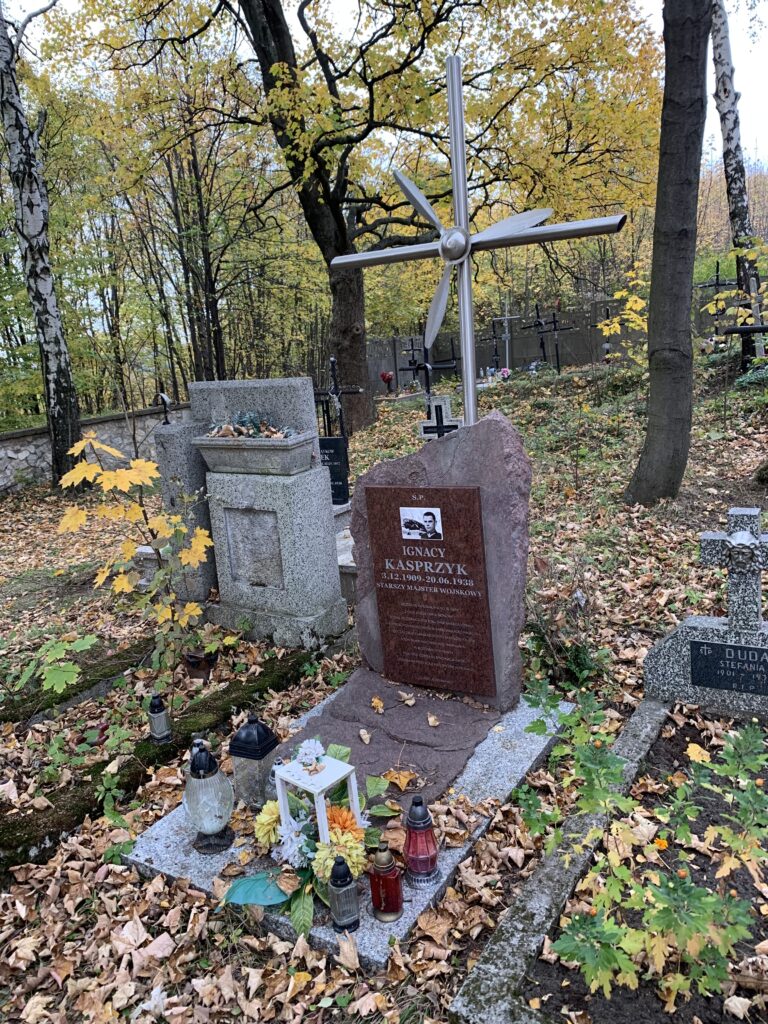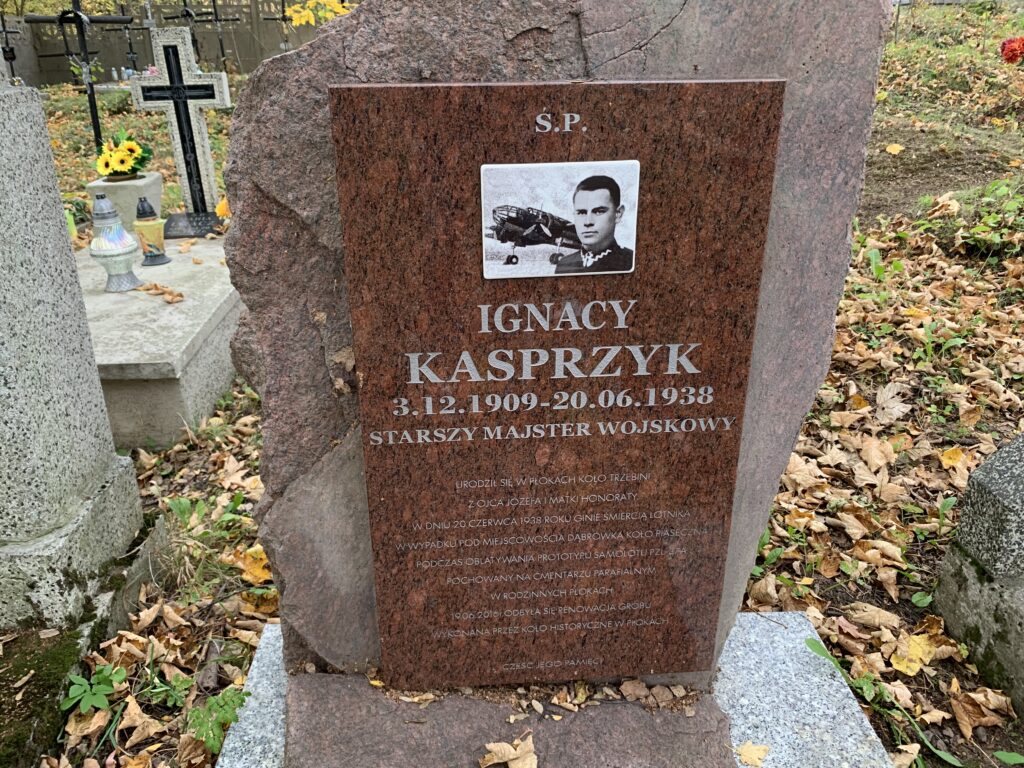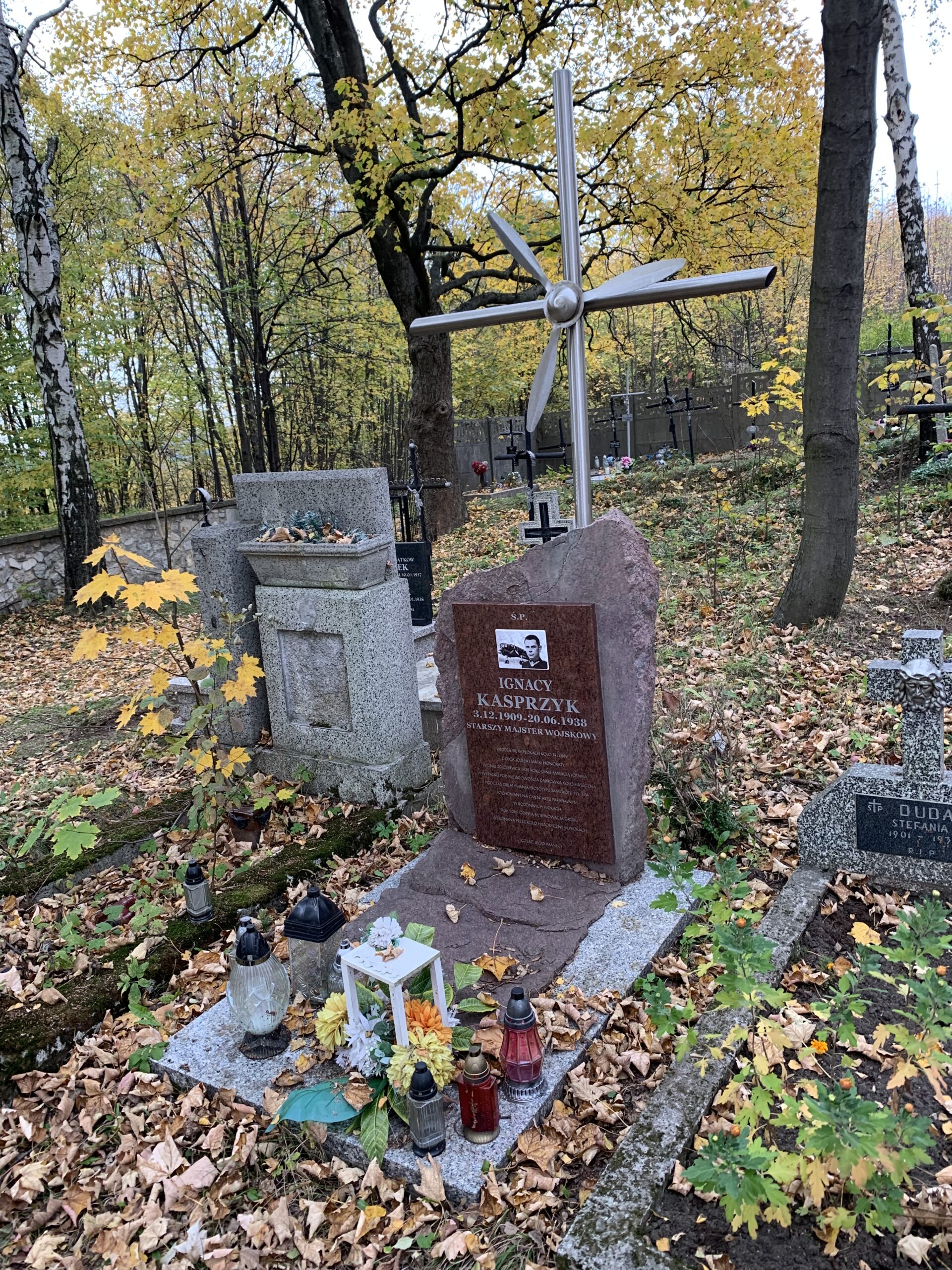Kraków 2024-12-12
Ignacy Kasprzyk.
The PZL-37 Łoś crash on June 20, 1938.
Ignacy Kasprzyk was born in Płoki on December 3, 1909. At that time, Płoki was in the Austrian partition and was subject to the Free City of Kraków. Father Józef, mother Honorata. Ignacy Kasprzyk graduated from primary school, and then vocational school in the specialty of mechanics. As a ten-year-old, he watched as the Republic of Poland regained independence. He was called up for military service and was assigned to the 2nd Air Regiment in Kraków in Rakowice. After training, during the unitary period, he was assigned to the technical staff servicing aircraft. This occupation interested him very much, to the extent that he remained in the professional service of the Polish Army. He was seconded to the 6th Air Regiment based at the modern Skniłowo airport in Lviv. Here he graduated from the school of aircraft mechanics and was appointed a professional non-commissioned officer. In Lviv, he deepened his practice. He was diligent, hard-working, conscientious, with an above-average interest in aviation. After several years of work, he became a high-class specialist, which did not escape the attention of his superiors. He was sent to Warsaw with an assignment to the Independent Experimental Squadron, where he took part in work related to testing aircraft newly introduced to service in the Polish Military Aviation.
On June 20, 1938, Ignacy Kasprzyk died as an aviator in an accident over the town of Dąbrówka near Piaseczno, during a test flight of the prototype of the PZL-37A Łoś bomber. In accordance with the will of his family, he was buried in the parish cemetery in his native Płoki.
PZL-37 Łoś.
The PZL-37 Łoś aircraft was a medium, twin-engine, super-modern bomber aircraft, developed by PZL-Okęcie under the supervision of engineer Jerzy Dąbrowski. The aircraft first flew on 13 December 1936. The aircraft was tested by the Aviation Technical Institute. During the tests, over 600 defects were removed and around 250 modifications were made to the structure. The aim was to refine the design as much as possible so that the aircraft could be handed over to the Polish Army and potential foreign recipients as a fully successful one. Several test series aircraft had already been built, which already had doubled main landing gear wheels, but still a single vertical tail. On 20 June 1938, one of the PZL-37 Łoś aircraft was prepared for another test flight. The crew consisted of three pilots: platoon pilot Stanisław Macek (1907-1938, one of the most experienced acrobatic pilots, member of Jerzy Bajan’s group), private assistant mechanic Mieczysław Sioch (1914-1938) and our hero, flight engineer Ignacy Kasprzyk. The crew was given a flight for higher piloting, i.e. acrobatics at a medium altitude. While performing a loop, the wing of the aircraft fell apart. The machine fell to the ground, burying the crew in its remains. The aircraft program was suspended for a month. The commission investigating the causes of the disaster discovered faulty riveting of the wing caissons made of corrugated sheet metal by Junkers. It was impossible to determine whether this was another sabotage, of which several had already been noted. Especially in engine production. The remaining aircraft were dismantled to remove the faulty riveting. The same was done with 20 sets of already finished wings. As a result, the delay was about three months. Despite this, the PZL-37 Łoś wrote a beautiful page in the Defensive War of 1939, against the Germans and their Muscovite brothers. The deaths of these young pilots were not in vain.
Written by Karol Placha Hetman
PS. Part of the information was taken from the book “In Memory of the Fallen Airmen 1933-1939” by A Popiel.



